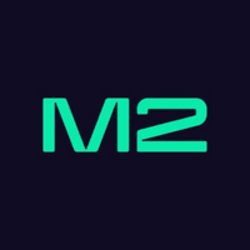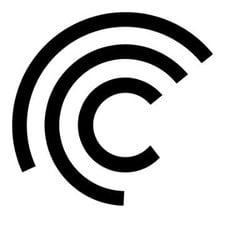This article is intended as a comprehensive yet beginner’s guide to the world of DeFi. Before we proceed, I must mention the impracticality of covering the entire idea in a single piece. But you will learn what the industry stands for at its core and why this is the closest to true financial freedom you will get. Let’s dive in.
DeFi stands for Decentralised Finance. Consider it the web 3.0 alternative to your traditional financial (TradFi) systems: banks, loans, investments — and every other thing in between.
Anyone who has actively used a real bank (I really suspect you have) understands that the traditional system, while established, is plagued with several limitations.
DeFi aims to solve the bulk of them.
Let’s have a look at some of these shortcomings and how DeFi tackles them:
Limited Access: A significant portion of the global population is unbanked or underbanked. This shouldn’t come as a surprise considering that TradFi institutions often have strict eligibility criteria. DeFi, with its permissionless design, has an inherent potential for greater financial inclusion.
Intermediaries and Fees: Traditional financial transactions often involve multiple intermediaries. This may result in high fees and slow processing times. With DeFi, there’s hardly a middleman. Its P2P structure does well in reducing costs and streamlining transactions.
Lack of Transparency: Most people do not understand the inner workings of traditional financial systems, as they are usually opaque. This generally makes it difficult for users to understand how their money is managed. But DeFi is built on blockchains – public ledgers, allowing anyone to track their assets and transactions with relative ease.
Censorship Risk: Traditional institutions can restrict your access to certain services or freeze your accounts based on their own criteria – which aren’t always clear! But DeFi is largely censorship-resistant, there isn’t a single body making all the decisions. This means greater control over your finances.
Still asking Why DeFi?
The limitations above, among others, create a fertile ground for innovation. And this is partly why the DeFi landscape is experiencing exponential growth. There are lots of investment opportunities.
People are realising they can have absolute freedom with their finances, controlling their fate as they deem fit.
DeFi is the game-changer that made this possible.
The next section will consider the core concepts and functionalities of decentralised Finance. Keep reading.
Decentralised Finance (DeFi) is a new paradigm for financial services built on the secure and transparent foundation of blockchain technology.
The landscape has received significant attention in recent years, with both ordinary individuals and institutional heavyweights not wanting to be left behind.
Why the attention and how is DeFI reshaping finance? I hear you asking.
Let’s discuss the core concepts here:
Lending and Borrowing
DeFi eliminates the need for traditional financial institutions to act as intermediaries for loans. You can borrow or lend money without all that paperwork your bank asks for.
Here’s how it works:
Lending
Users can deposit their idle cryptocurrency holdings into lending pools known as Yield Farms and automatically earn attractive interest on their assets.
These pools connect lenders with borrowers who can access crypto loans, sometimes at lower interest rates compared to borrowing money from traditional options.
Another form of lending involves staking your cryptocurrencies in liquidity pools to enable trading on exchanges.
Lending is one of the best ways to make passive income in the DeFi landscape.
Borrowing
Want to get a loan? You can use your existing cryptocurrency holdings as collateral to borrow other cryptocurrencies. With these solutions, you can access liquidity without selling any of your assets. You simply pledge your cryptocurrency and receive a loan based on the locked collateral.
Examples of the top lending and borrowing protocols include Aave, Compound, and Maker.
Decentralised Exchanges (DEXs)
DEXs are arguably the best part of DeFi. They have certainly drawn the most attention, with a lot of traders shifting their focus away from centralised exchanges.
But what exactly are DEXs?
Unlike centralised exchanges controlled by a single entity, e.g., Binance, DEXs operate on a peer-to-peer (P2P) basis. As a trader, you can swap cryptocurrencies in a marketplace without relying on a custodian to hold your assets.
DEXs offer:
Transparency. Transactions are recorded on the blockchain; they are visible to all and immutable.
Security. You retain control of your private keys and crypto assets throughout the trading process.
Wider Access. DEXs generally have fewer restrictions on participation compared to centralised exchanges. No paperwork, no lengthy KYC.
Examples of top DEXs are Uniswap, PancakeSwap, and Balancer.
These are the core concepts you should be aware of as a beginner. Things obviously get more complex, but at the centre of DeFi are lending, borrowing, and trading/swapping protocols alongside their dApps (decentralised apps).
Decentralised Insurance and GameFi are other key emerging areas to note.
Smart contracts are the backbone of DeFi applications. Similar to how your regular bank apps rely on some sort of programmable business logic behind the scenes, DeFi apps run on Smart Contracts.
But they take things a lot further…
These contracts automate agreements and processes, eliminating the need for 3rd party interference or oversight.
Here’s a breakdown of how smart contracts power DeFi protocols:
Lending & Borrowing
Smart contracts define the terms of loan agreements. This often includes interest rates, collateral requirements, and automatic loan repayments based on predetermined conditions.
Such a process facilitates a secure and transparent lending and borrowing experience without third-party verification or legal oversight.
DEXs
Smart contracts automate order matching and execution on DEXs.
They also define the rules for trading pairs, ensure sufficient liquidity in pools, and enable secure token swaps between users.
Hence, there’s zero need for a central authority to control order books or manage your assets.
Decentralised Autonomous Organisations (DAOs)
Think of DAOs as your usual organisations – but on a blockchain. The inherent implication of this is that they are community-run.
These bodies leverage smart contracts to automate treasury management, voting processes, and decision-making based on predefined rules.
Thus, smart contracts not only ensure transparency in DAO operations, but they make room for the resolution of potential conflicts.
Are smart contracts perfect?
The utility of smart contracts in DeFi cannot be overstated. The entire idea of a decentralised system relies heavily on having as minimal input as possible from third parties.
Smart contracts streamline processes and enhance security with automated agreements. This chops down the risk of human error or manipulation.
However, smart contracts are still just code. And codes are prone to vulnerabilities and exploitation too.
Thankfully, careful code audits and responsible development practices do a good job of mitigating these risks.
Decentralised Finance (DeFi) introduced many to a compelling vision of a more inclusive and efficient financial system. Pretty much every negative projection about the industry’s sustainability has been shattered. DeFi keeps waxing stronger.
Should you key in now?
Definitely. I think 5 years ago was the best time, luckily for you, now is probably the second best time.
Benefits of DeFi
Accessibility. DeFi removes barriers to entry, bringing financial services to the unbanked and underbanked.
Transparency. Blockchain technology is transparent by design. It promotes trust by making financial processes more visible.
Efficiency. DeFi automates tasks and eliminates intermediaries. With smart contracts, you can access services at your convenience.
Innovation. The DeFi landscape is a space for experimentation. Novel financial products and services are created each day.
Control. You retain control of your assets and financial data, you freely make your own investment decisions as you wish.
Risks You Must Be Aware of in DeFi
Honestly, it’s not all a bed of roses. Be wary of anyone trying to convince you otherwise. DeFi has its predicaments:
Volatility. The cryptocurrency market is innately volatile, and DeFi applications are subject to these fluctuations.
Smart Contract Vulnerabilities. Hackers can exploit bugs in smart contracts and steal locked funds or cause other problems.
Rug Pulls. Fraudulent DeFi projects often lure investors and then abandon the project after stealing invested funds.
Regulatory Uncertainty. The regulatory landscape surrounding DeFi is still evolving, which can pose challenges for users and businesses.
Complexity. DeFi is renowned for having a steep learning curve. Navigating the ecosystem can be complex for beginners.
DeFi presents exciting opportunities for sure, but do not engage without fully acknowledging the associated risks or how things work. That’s a cool recipe for losing money.
Conduct thorough research, understand the protocols you’re interacting with, and only invest what you can afford to lose. The future of DeFi is promising, but informed participation is necessary.
So, you have decided to have your share of the pie, the next thing on your mind should be where to begin. Jumping head first into the first shiny thing you see is a quick way to knock yourself out.
As far as DeFi is concerned, there are 4 major areas you can look into:
Airdrops: ideal for beginners, help you build up liquidity for other DeFi activities. I will discuss this in a subsequent article.
Yield Farming: more capital-intensive, a good way to utilise idle money.
Forex-style Trading: buying and selling crypto based on price predictions to make a short-term profit.
Spot Trading (HoDLing): Buying and holding assets for the long term.
In the next article, we will focus on spotting good assets you can buy and then sell at a good ROI. Stay in touch!
DeFi is an idea that has come to stay. With billions currently locked in the ecosystem, the industry can only go higher from here. Admittedly, the learning curve is steep, coupled with a rather negative outlook thanks to bad actors. But with adequate knowledge, anyone can efficiently navigate this path to financial freedom. And that is where I come in! Stay tuned for my DeFi series targeted at beginners.















































































Be the first to comment